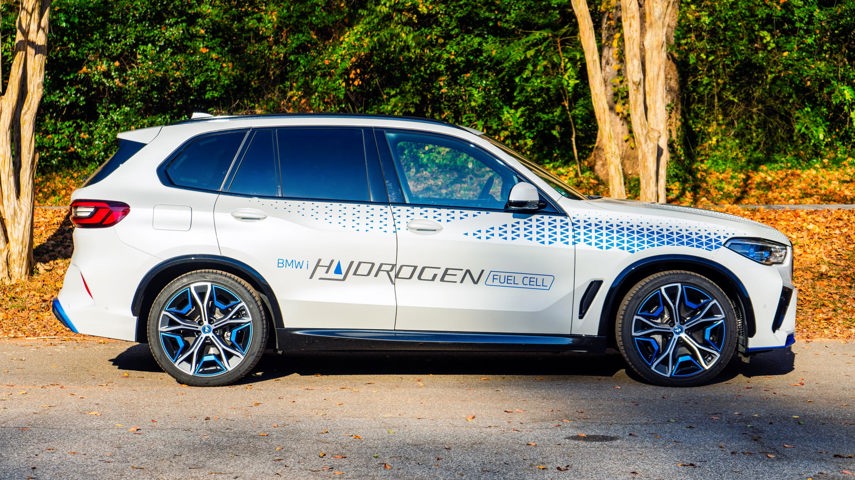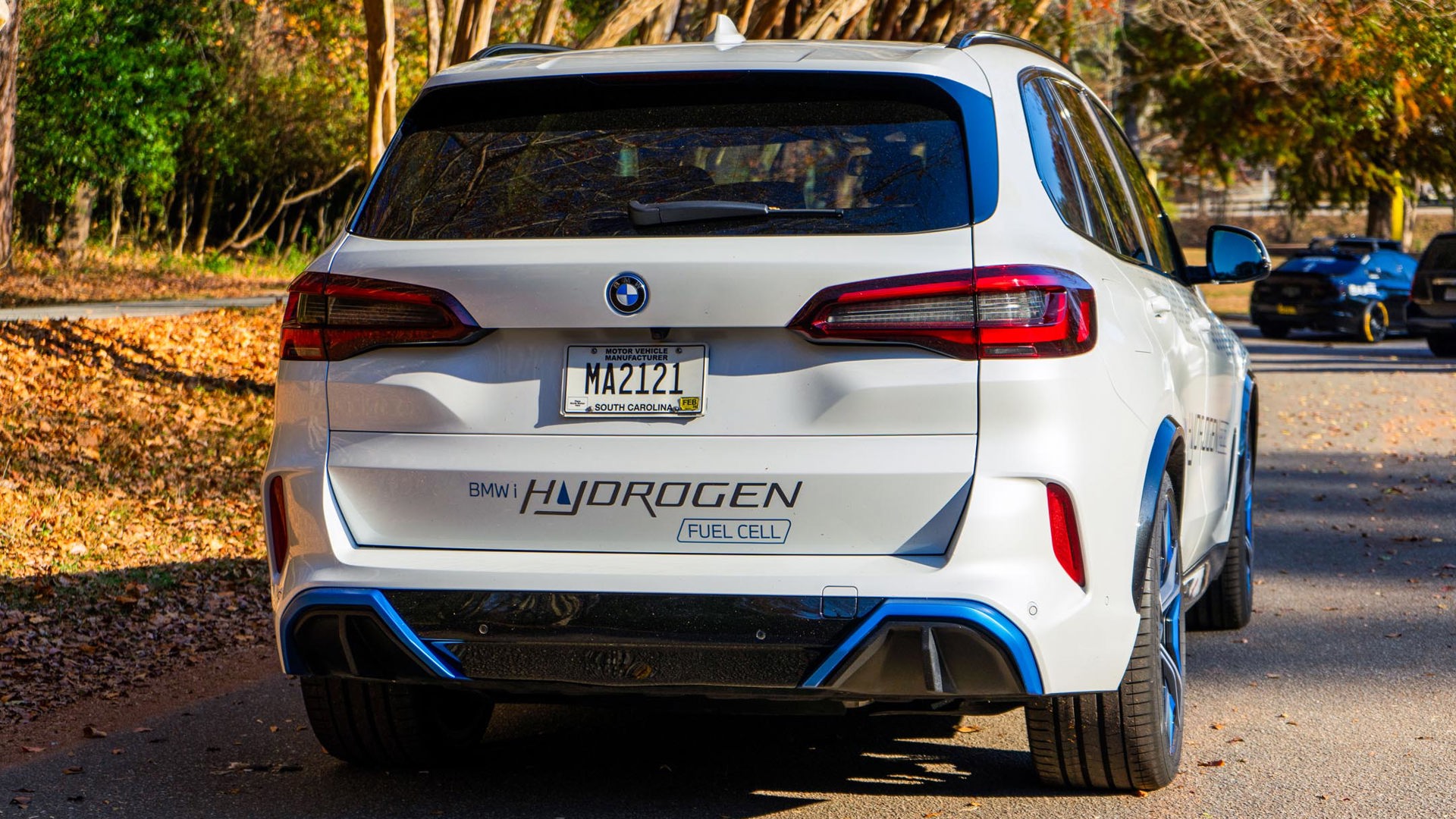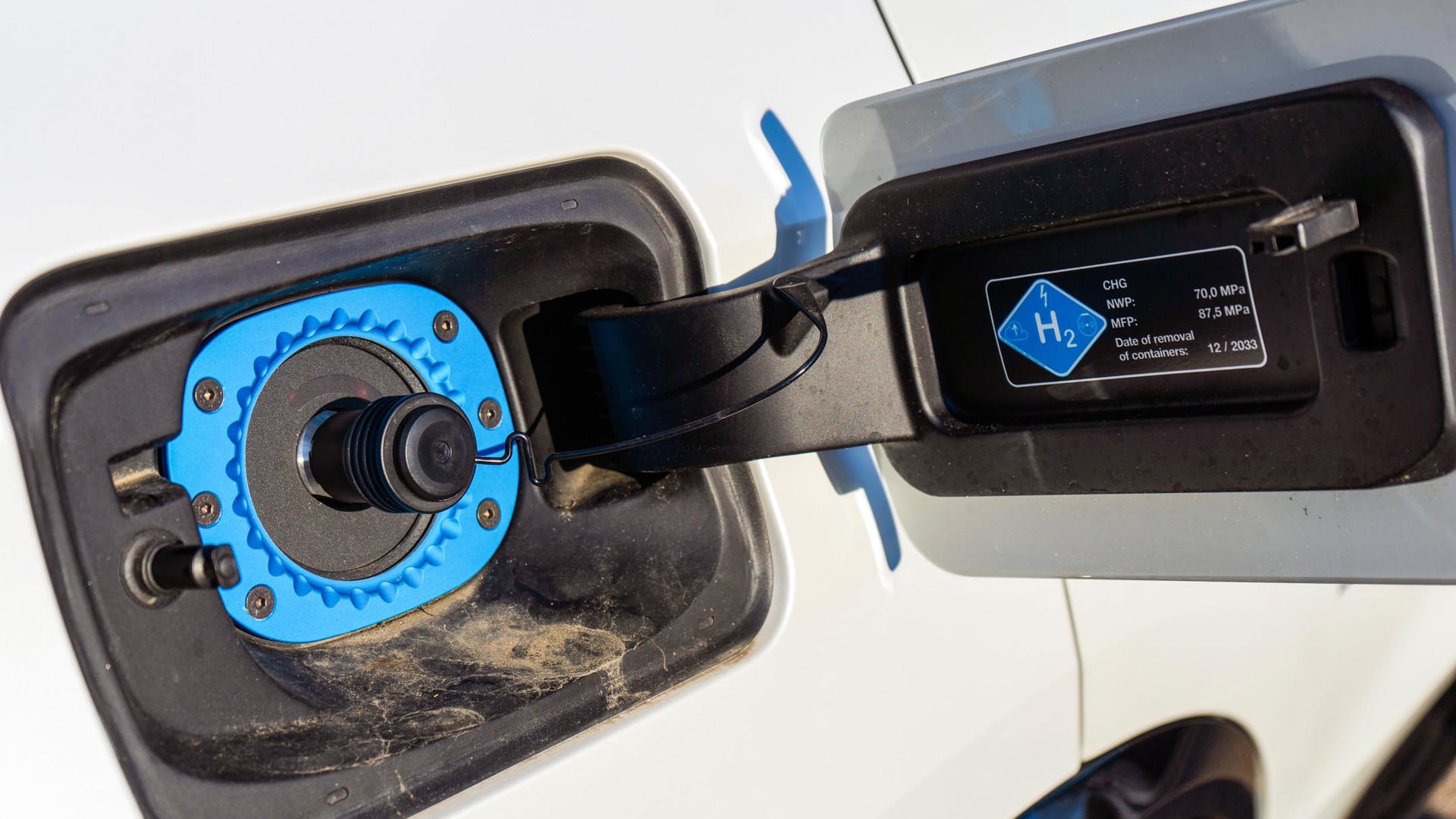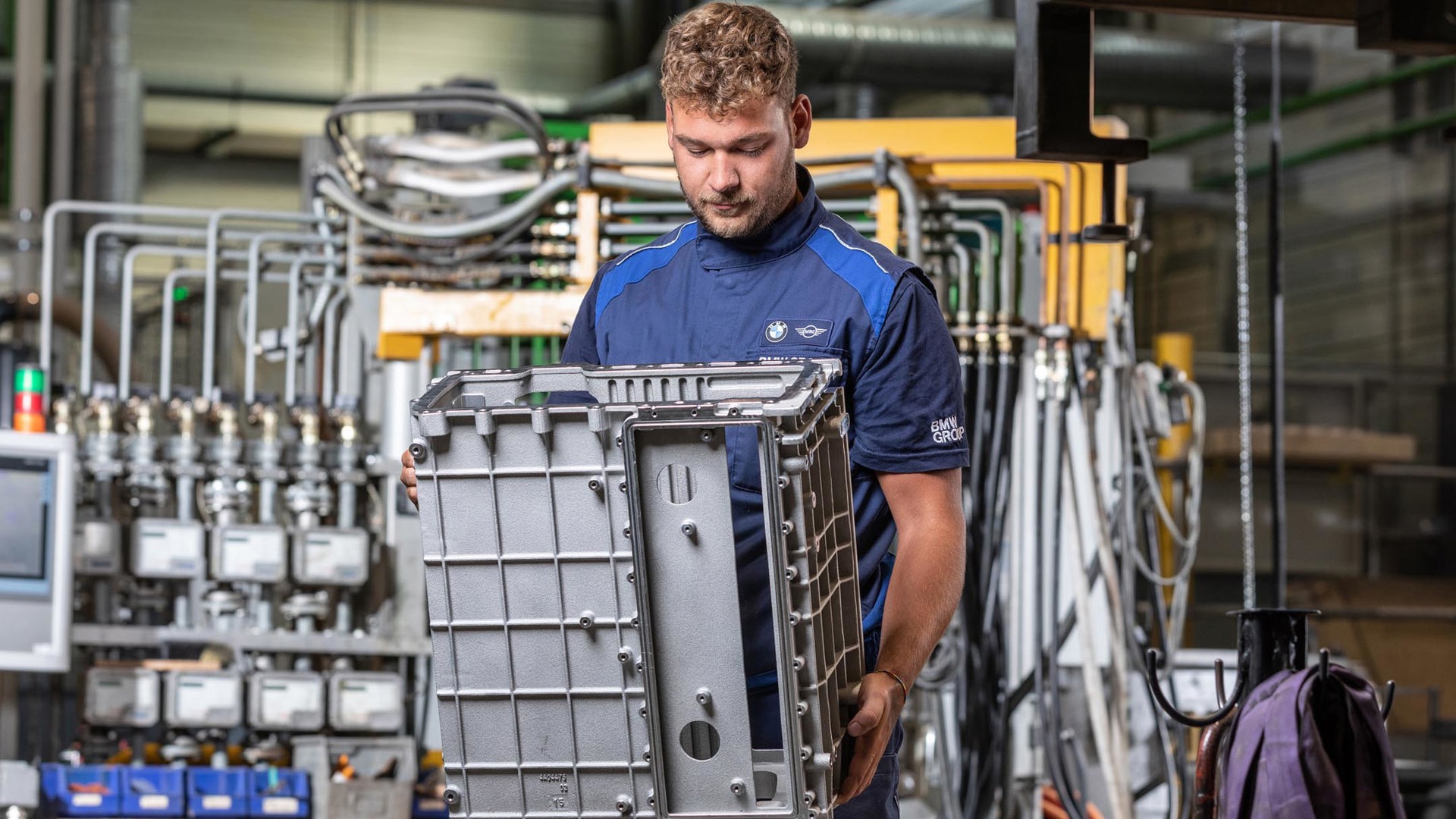If it weren’t for the obvious graphics plastered all over the BMW X5 I was about to drive, there would be no indication it was powered by hydrogen and was a fuel-cell electric vehicle (FCEV). We’ve seen vehicles like this before: the Honda FCEV Clarity, Toyota Mirai, and Hyundai Nexo. Now, BMW has launched the iX5, a hydrogen fuel-cell electric vehicle based on a production X5.
You can’t go down to your local BMW dealer and buy an iX5 – there are only 100 of them, and they are all part of a pilot fleet that will be distributed around the world. They will be used for demonstration and trial purposes, offering those outside its development a chance to experience a hydrogen-powered BMW.
What Is an FCEV and How Does It Work?

An FCEV, at its core, is an electric vehicle driven solely by electric motors. The only difference between it and a battery electric vehicle (BEV or EV) is the fuel type used to power those motors. BEVs are powered only by batteries, while FCEVs are fuelled by compressed hydrogen stored in onboard tanks. A battery stores its energy chemically and then converts it to electrical energy, which directly powers the motors. In an FCEV, hydrogen must be fed into a fuel-cell stack to generate electrons.
The BMW iX5 uses Toyota-supplied fuel cells that use proton-exchange membrane (PEM) technology. BMW then assembles the individual cells to form a fuel-cell stack in its plant in Landshut, Germany.
Each individual fuel cell is a thin wafer-like sheet that looks a bit like a circuit board. It comprises an anode, a cathode, and an electrolyte membrane in between. Hydrogen atoms enter through the anode side, are stripped of their electrons, and forced through a circuit that generates electricity. The ionized hydrogen then continues through the electrolyte, where oxygen entering through the cathode side bonds with it, producing water and heat. The electricity produced from this chemical reaction is what powers the electric motors.
Driving the Hydrogen-Powered BMW iX5

The BMW iX5 is a standard X5 SUV with its gasoline engine replaced by a fuel cell stack and a 295-kW electric motor driving the rear wheels. There are two cylindrical tanks under the floor that hold up to six kilograms of hydrogen and feed the fuel cell stack, which is capable of generating 125 kW of power. The system generates a total of 401 hp, making it the most powerful passenger FCEV currently in production. The iX5 weighs roughly the same as an X5 plug-in hybrid (PHEV).
From behind the wheel, it feels like any other X5, just quieter. There aren’t any extra buttons or procedures to follow or any weird displays, just a standard set of digital gauges and controls. The fuel gauge, however, displays “H2” for hydrogen instead of the typical fuel pump symbol.
It handles and rides just like the X5 PHEV, and it feels even more powerful thanks to the large electric motor on the rear axle. BMW says it will accelerate from zero to 100 km/h in about six seconds and can attain a top speed of 185 km/h. Total range is 504 km. Throughout the drive, there was no indication of the chemical reaction occurring in the fuel cell stack in front of me. It was a seamless and impressive experience.
What Are the Advantages of FCEVs?

FCEVs combine all the advantages of a battery electric vehicle with the ability to refuel in three to four minutes.
Even with the latest high-speed chargers, an EV takes at least 30 minutes to charge from nearly empty to 80 per cent, and only in ideal scenarios. Real-world charging speeds are affected by many variables including the weather, the battery’s state of charge, preconditioning, charger capability, and more. On a long drive, spending upwards of 30 minutes per charging session is common, and that’s only if the infrastructure is available and working in the first place.
FCEVs can be fuelled quickly, and the procedure is nearly identical to filling up a gasoline or diesel vehicle, which means there’s no learning curve.
Because FCEVs don’t rely on large batteries to store their energy, they are unaffected by cold weather and don’t lose range when the temperatures plummet. Hydrogen-fuelled vehicles would also be more suitable for towing than an EV. And the only emission is water.
Hydrogen fuel cell stacks also require less energy and resources to produce compared to the large lithium-ion batteries in BEVs today, meaning they have a lower environmental impact right out of the gate. But it can’t all be good, right?
What Are the Disadvantages of FCEVs?

While fuel-cell stacks are easier to make, there’s a grey area, specifically “grey” hydrogen. There is an entire colour spectrum corresponding to where we get our hydrogen, but we’ll save that for another story. The important thing to know is that the bulk of the hydrogen we produce is grey hydrogen, which uses steam methane reformation to produce the element, and the process generates high levels of greenhouse gases. Using grey hydrogen to fuel an FCEV would make it no better than an internal combustion engine vehicle and wouldn’t provide for a sustainable method of mobility. What we want is to use green hydrogen.
Green hydrogen uses renewable energy sources such as wind and solar to generate hydrogen through a process called electrolysis. Electrolysis uses an electric current to split water into hydrogen and oxygen. The hydrogen generated through this process can then be stored and used as fuel. Currently, only five per cent of hydrogen is generated this way.
FCEVs are also less efficient than BEVs due mainly to conversion losses of producing hydrogen through electrolysis, storing it, and then converting it back to electrical energy in the fuel stack. This puts total well-to-wheel efficiency of an FCEV around 30 per cent, according to the International PTX hub. BEVs, in comparison, rate at around 70 per cent.
The biggest disadvantage that FCEVs face is the complete lack of refuelling infrastructure. Outside of British Columbia, Quebec, and California, there are virtually no public hydrogen fuelling stations in North America. It makes owning and refuelling FCEVs nearly impossible. Limited numbers of the Toyota Mirai and Hyundai Nexo have been available to the public in those areas, but the feasibility outside those locales is limited.
Where Is This All Going?

Germany imports most of its energy but also uses a combination of wind and solar to bolster its power grid. When demand for energy is low, it creates an oversupply and this excess electricity, which is essentially free, can be used for hydrogen production. It’s a very efficient way to store and transport excess energy, albeit in molecular format. Transmitting electricity through power lines is costly, and there are energy losses involved, whereas hydrogen can be easily and more cheaply transported to remote areas to be used as a fuel source.
The International Energy Agency sees hydrogen as having considerable potential as an energy source in the future, and most industrialized nations already have a hydrogen strategy in place. The European Union member countries have agreed to build hydrogen stations in all major cities and every 200 km along busy highways. In total, there will be over 600 stations capable of refuelling commercial and passenger vehicles across the network. They expect to have this completed by the end of 2030.
BMW sees FCEV technology as a complement to current BEV tech, not something poised to take over. There is a subset of customers for whom BEVs are not feasible, and hydrogen offers a better solution, so being able to offer both types of powertrains is an advantage from a business perspective.
While hydrogen might not be in our immediate future, its potential as an alternate fuel source to batteries, especially in the transportation and commercial sector, is nearly limitless.


























